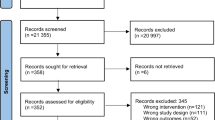Abstract
Although US federal law requires all American states to permit abortion within their borders, states retain authority to impose restrictions. We used hospital discharge data to study the rates of major abortion complications in 23 states from 2001 to 2008 and their relationship to two laws: (i) restrictions on Medicaid – the state insurance programs for the poor – funding, and (ii) mandatory delays before abortion. Of 131 000 000 discharges in the data set, 10 980 involved an abortion complication. The national rate for complications was 1.90 per 1000 abortions (95 per cent CI: 1.57–2.23). Eleven states required mandatory delays and 12 restricted funding for Medicaid participants. After controlling for socio-economic characteristics and the pregnancy complication rate, legal restrictions were associated with lower complication rates: mandatory delays (OR 0.79 (0.65–0.95)) and restricted Medicaid funding (OR 0.74 (0.61–0.90)). This result may reflect the fact that states without restrictions perform a higher percentage of second-trimester abortions. This study is the first to assess the association between legal restrictions on abortion and complication rates.Commentary JPHP.2012.15, available at www.palgrave-journals.com/jphp/, relates to this article.

Similar content being viewed by others
References
Boland, R. and Katzive, L. (2008) Developments in laws on induced abortion: 1998–2007. International Family Planning Perspectives 34 (3): 110–120.
Johnson, B.R., Horga, M. and Andronache, L. (1993) Contraception and abortion in Romania. Lancet 341 (8849): 875–878.
Sedgh, G., Henshaw, S.K., Singh, S., Bankole, A. and Drescher, J. (2007) Legal abortion worldwide: Incidence and recent trends. International Family Planning Perspectives 33 (3): 106–116.
Bitler, M. and Zavodny, M. (2001) The effect of abortion restrictions on the timing of abortions. Journal of Health Economics 20 (6): 1011–1032.
Cates Jr., W., Gold, J. and Selik, R.M. (1979) Regulation of abortion services: For better or worse? New England Journal of Medicine 301 (13): 720–723.
Selik, R.M., Cates Jr., W. and Tyler Jr., C.W. (1981) Effects of restricted public funding for legal abortions: A second look. American Journal of Public Health 71 (1): 77–81.
American Medical Association, Council on Scientific Affairs. (1992) Induced termination of pregnancy before and after Roe v Wade. Trends in the mortality and morbidity of women. Journal of the American Medical Association 268 (22): 3231–3239.
Rubin, G.L., Gold, J. and Cates Jr., W. (1979) Response of low income women and abortion facilities to restriction of public funds for abortion: A study of a large metropolitan area. American Journal of Public Health 69 (9): 948–950.
Cates Jr., W. (1981) The Hyde amendment in action: How did the restriction of federal funds for abortion affect low-income women? Journal of the American Medical Association 246 (10): 1109–1112.
Korenbrot, C.C., Brindis, C. and Priddy, F. (1990) Trends in rates of live births and abortions following state restrictions on public funding of abortion. Public Health Reports 105 (6): 555–562.
Cook, P.J., Parnell, A.M., Moore, M.J. and Pagnini, D. (1999) The effects of short-term variation in abortion funding on pregnancy outcomes. Journal of Health Economics 18 (2): 241–257.
Haas-Wilson, D. (1997) Women's reproductive choices: The impact of Medicaid funding restrictions. Family Planning Perspectives 29 (5): 228–233.
Althaus, F.A. and Henshaw, S.K. (1994) The effects of mandatory delay laws on abortion patients and providers. Family Planning Perspectives 26 (5): 228–233.
Blank, R.M., George, C.C. and London, R.A. (1996) State abortion rates. The impact of policies, providers, politics, demographics, and economic environment. Journal of Health Economics 15 (5): 513–553.
Bragonier, M. (1979) Health effects of restricting federal funds for abortion – United States. Morbidity and Mortality Weekly Report 28 (4): 37–39.
Bitler, M. and Zavodny, M. (2002) Child abuse and abortion availability. American Economic Review 92 (2): 363–367.
Joyce, T. and Kaestner, R. (2000) The impact of Mississippi's mandatory delay law on the timing of abortion. Family Planning Perspectives 32 (1): 4–13.
Henshaw, S.K. (1990) Induced abortion: A world review, 1990. International Family Planning Perspective 16 (2): 59–65, 76.
Gold, J. and Cates Jr, W. (1979) Restriction of federal funds for abortion: 18 months later. American Journal of Public Health 69 (9): 929–930.
Bartlett, L.A. et al (2004) Risk factors for legal induced abortion-related mortality in the United States. Obstetrics & Gynecology 103 (4): 729–737.
Koonin, L.M., Atrash, H.K., Smith, J.C. and Ramick, M. (1990) Abortion surveillance, 1986–1987. MMWR CDC Surveillance Summaries 39 (2): 23–56.
Steiner, C., Elixhauser, A. and Schnaier, J. (2002) The healthcare cost and utilization project: An overview. Effective Clinical Practice 5 (3): 143–151.
Jones, R.K., Kost, K., Singh, S., Henshaw, S.K. and Finer, L.B. (2009) Trends in abortion in the United States. Clinical Obstetrics and Gynecology 52 (2): 119–129.
Best, A.E. (1999) Secondary data bases and their use in outcomes research: A review of the area resource file and the healthcare cost and utilization project. Journal of Medical Systems 23 (3): 175–181.
Acknowledgements
We thank Joey Richards for his input on data analysis; Derek Schachter for his research assistance in collection and management of data; and Jay Bhattacharya and Corinna Haberland for helpful discussions and thoughtful comments on drafts.
Author information
Authors and Affiliations
Corresponding author
Additional information
Supplementary Information accompanies the paper on the Journal of Public Health Policy website (http://www.palgrave-journals.com/jphp/)
The authors examine whether restrictions on legal abortion that have been enacted by states since the Supreme Court found abortion legal in 1973, principally limits on government payment and waiting periods, affect rates of hospitalization for complications of abortion.
Electronic supplementary material
Rights and permissions
About this article
Cite this article
A Rolnick, J., S Vorhies, J. Legal restrictions and complications of abortion: Insights from data on complication rates in the United States. J Public Health Pol 33, 348–362 (2012). https://doi.org/10.1057/jphp.2012.12
Published:
Issue Date:
DOI: https://doi.org/10.1057/jphp.2012.12




